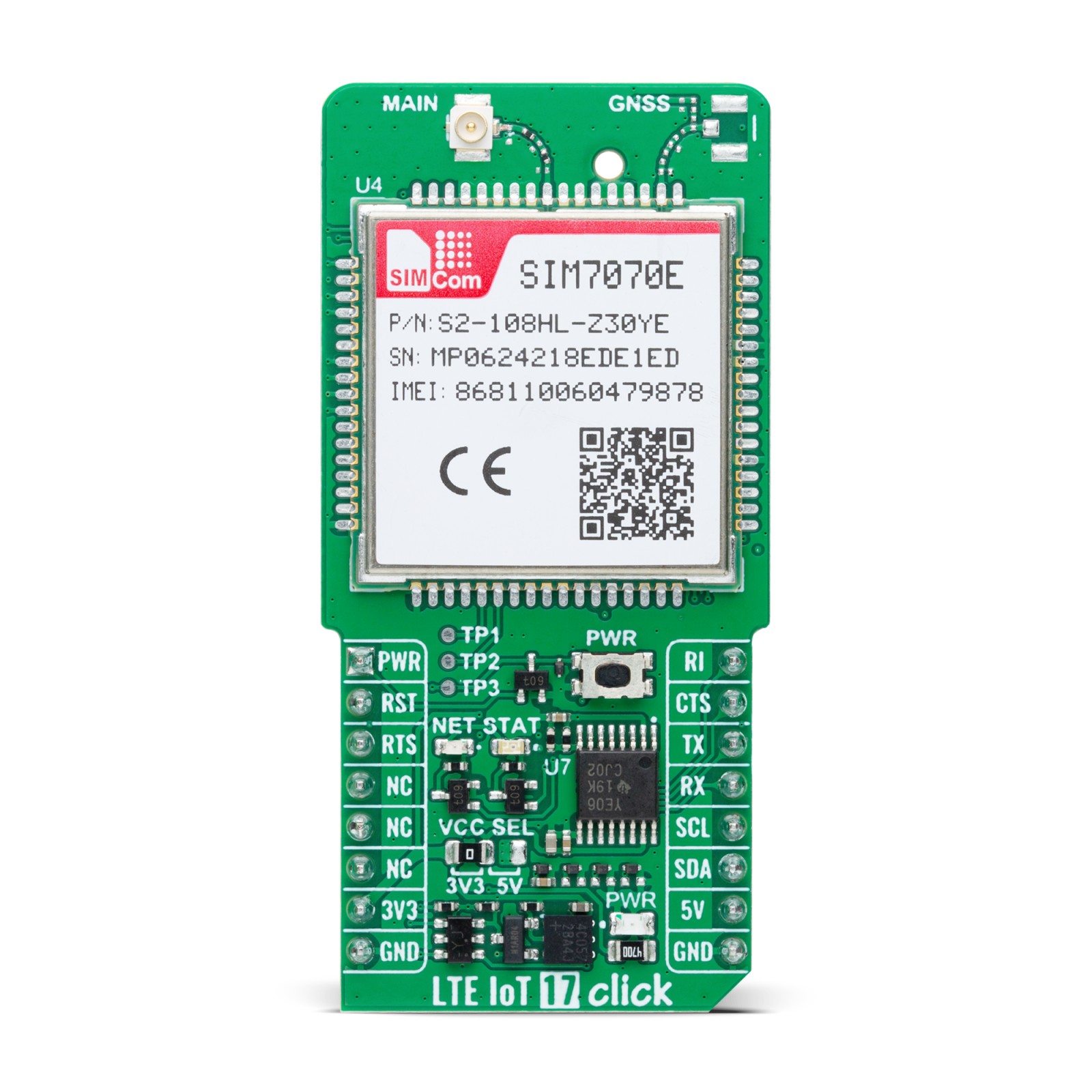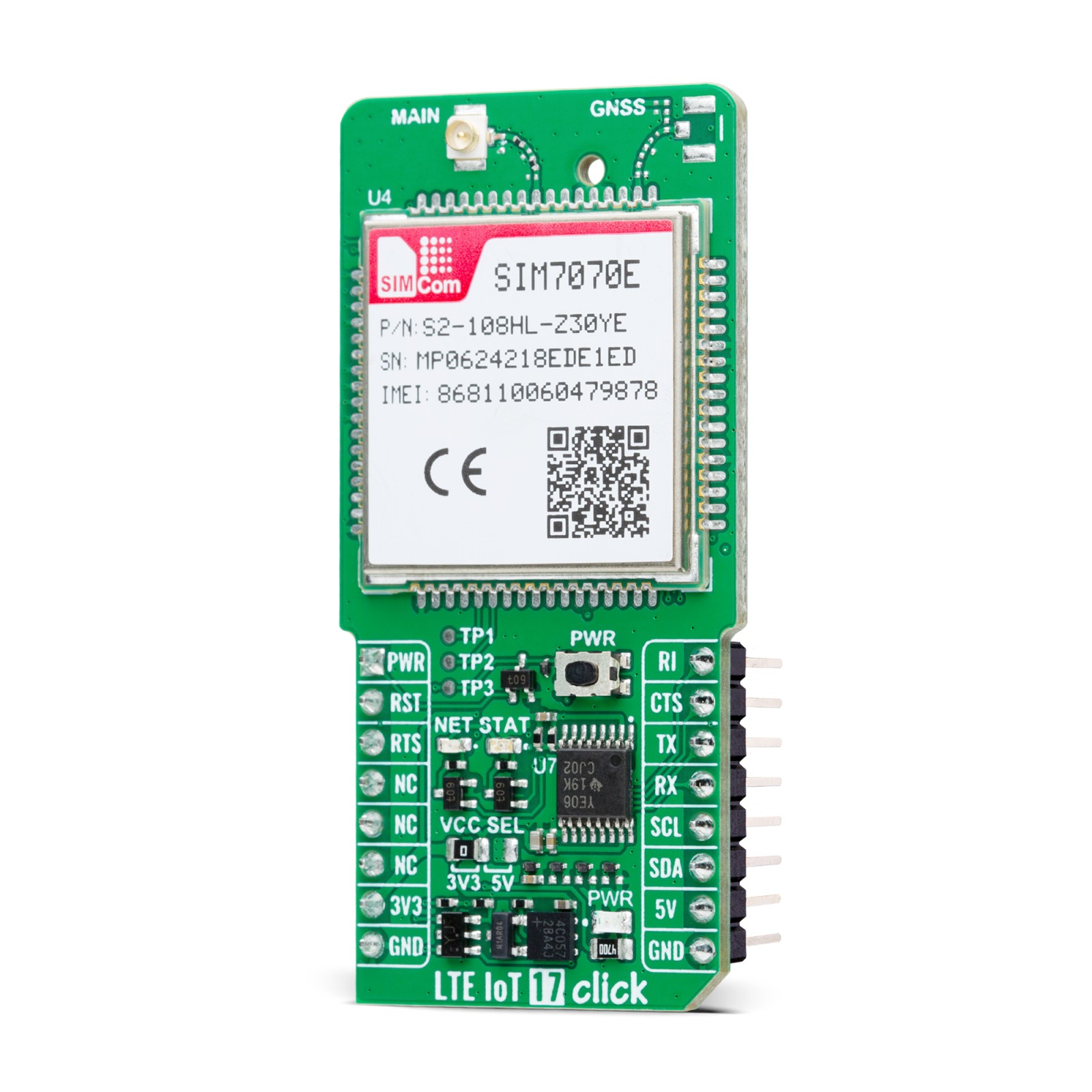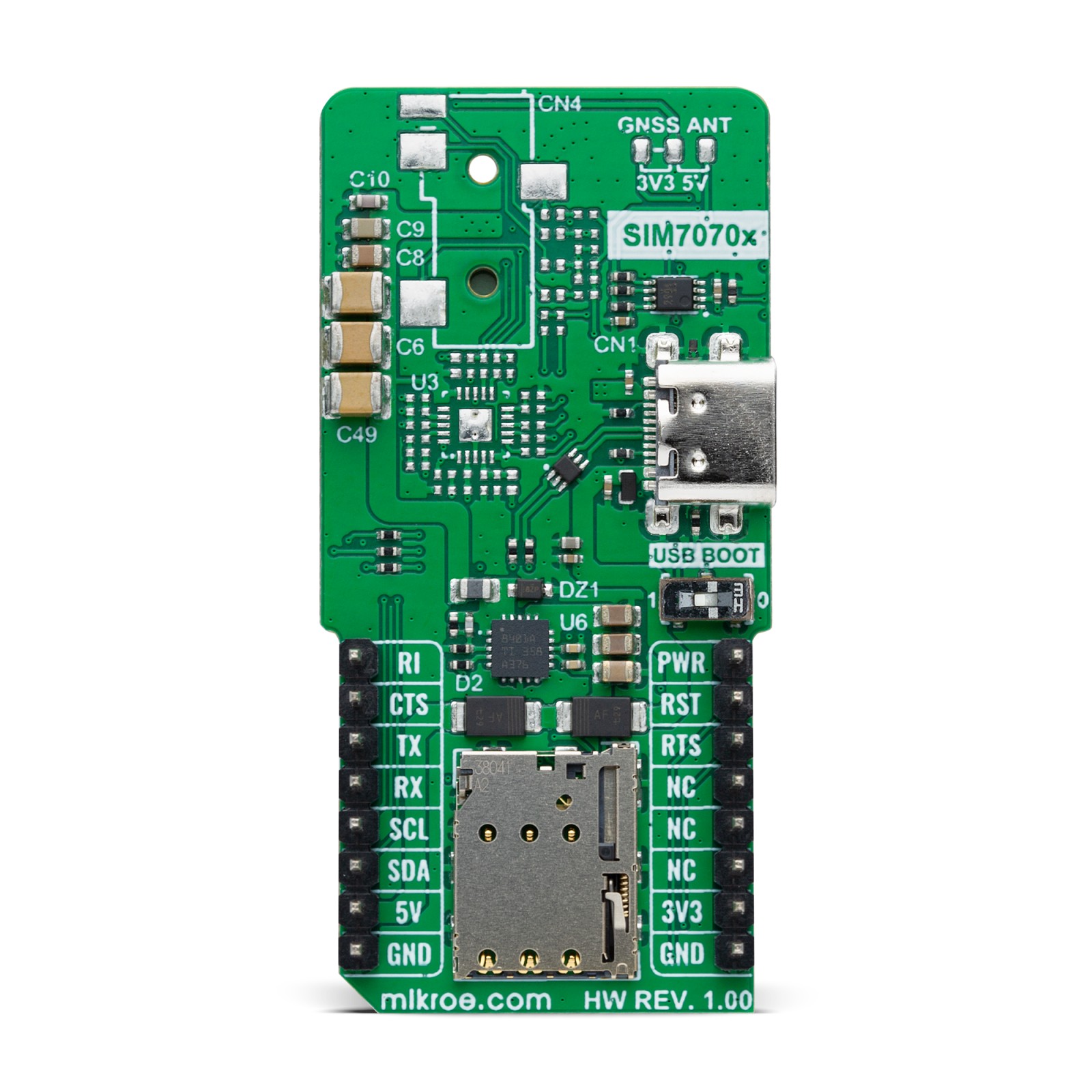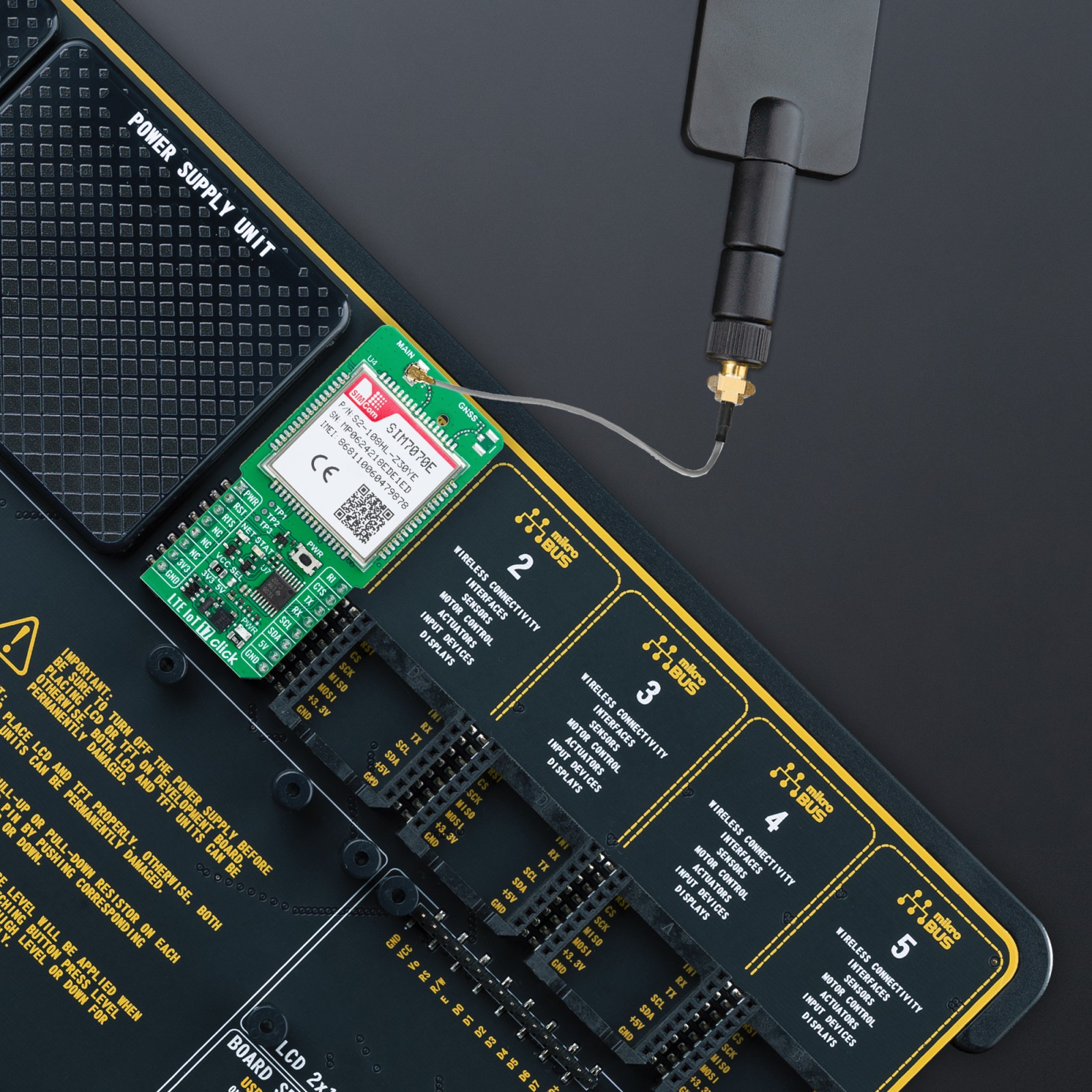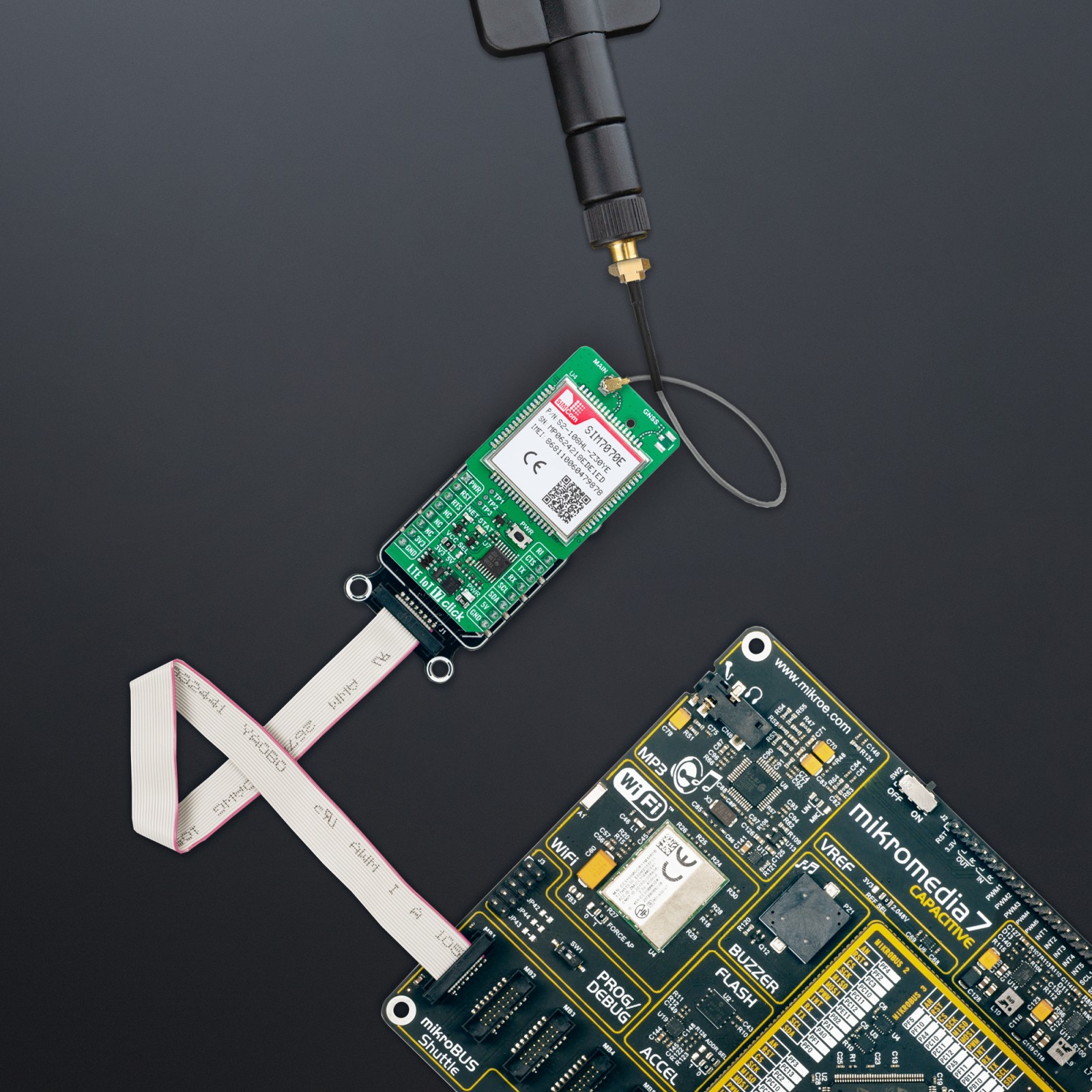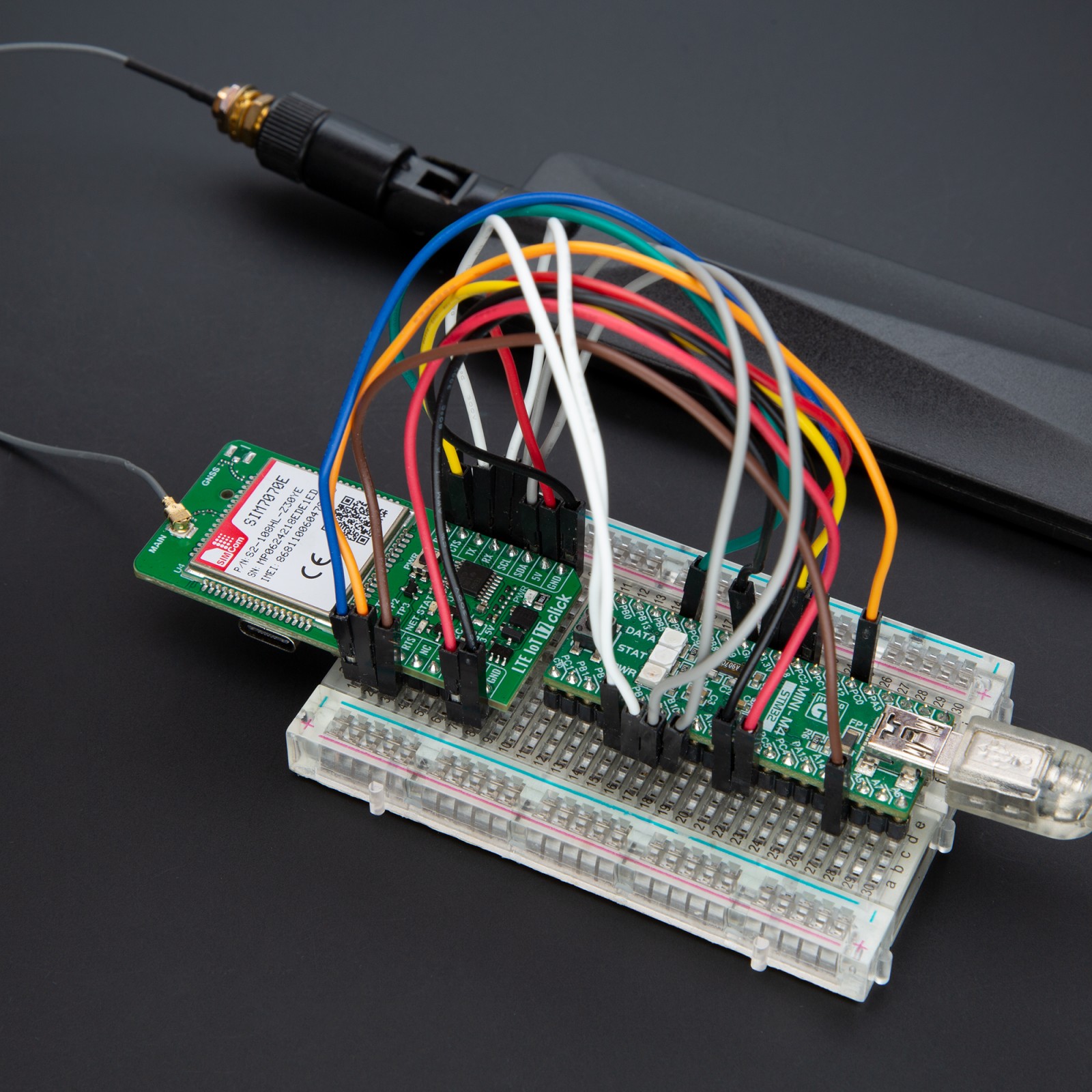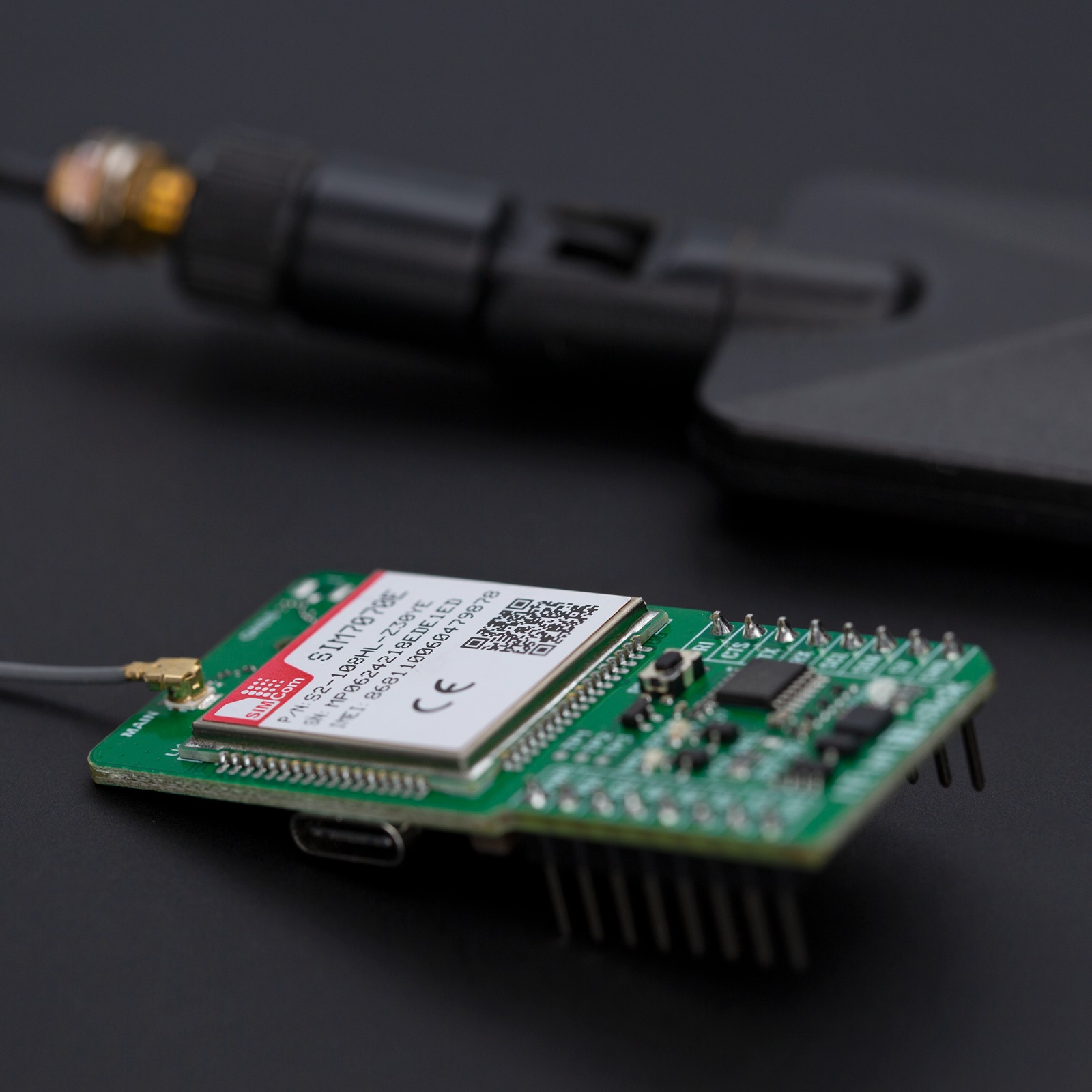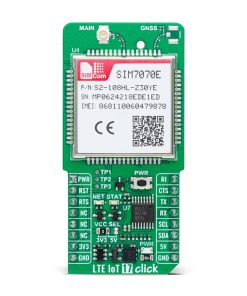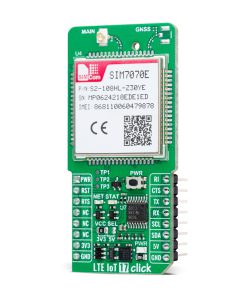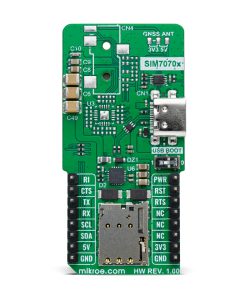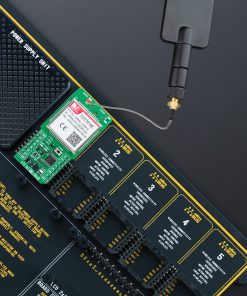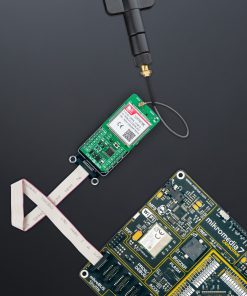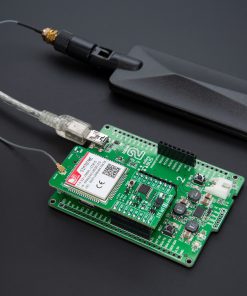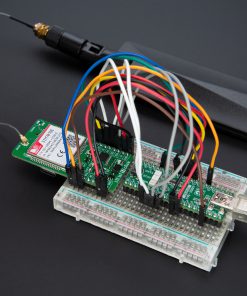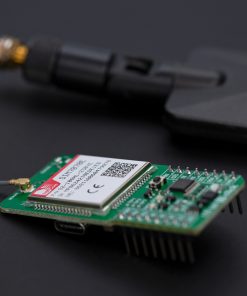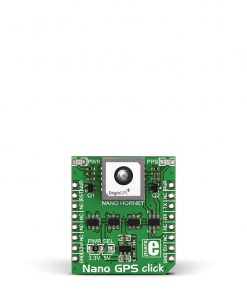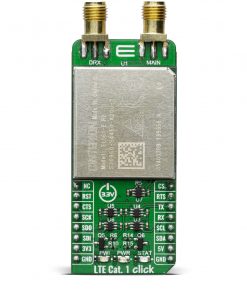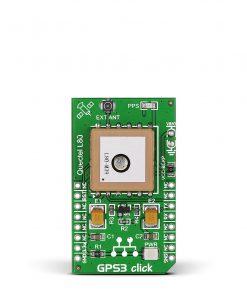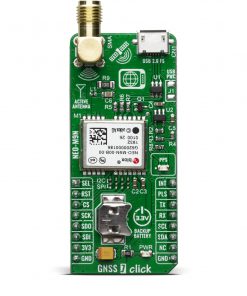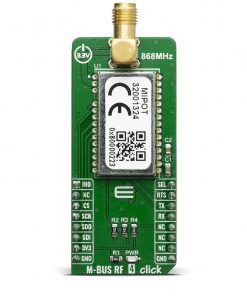LTE IoT 17 Click is a compact add-on board designed for low-power, long-range cellular communication in IoT applications. This board features the SIM7070E, a multi-band LTE module from SIMCom that supports the European/Australian region’s Cat-M, Cat-NB, and GSM modes. Key features include a maximum 589kbps downlink and 1.1Mbps uplink rate, support of multiple LTE bands and optional multi-constellation GNSS, a micro SIM card holder, AT command communication, firmware upgrades, power management options, and visual indicators for network and power status. This Click board™ is ideal for M2M applications like metering, asset tracking, remote monitoring, E-health, and more.
LTE IoT 17 Click is fully compatible with the mikroBUS™ socket and can be used on any host system supporting the mikroBUS™ standard. It comes with the mikroSDK open-source libraries, offering unparalleled flexibility for evaluation and customization. What sets this Click board™ apart is the groundbreaking ClickID feature, enabling your host system to seamlessly and automatically detect and identify this add-on board.
 Alcohol 3 Click
1 × R700.00
Alcohol 3 Click
1 × R700.00  WiFi Plus Click
1 × R2,200.00
WiFi Plus Click
1 × R2,200.00  ccRF2 Click
1 × R790.00
ccRF2 Click
1 × R790.00  RS485 Click 5V
1 × R230.00
RS485 Click 5V
1 × R230.00 
